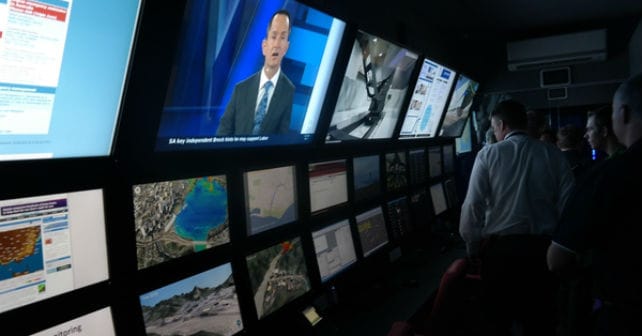Wanted: Energy storage technology for 25 million homes
 With the UK facing increasing concerns over how to keep the lights on in years to come, one public-private partnership is hoping to test innovative energy storage technologies that can provide power to the nation’s households even when wind-energy turbines aren’t spinning and the sun isn’t shining on solar panels.
With the UK facing increasing concerns over how to keep the lights on in years to come, one public-private partnership is hoping to test innovative energy storage technologies that can provide power to the nation’s households even when wind-energy turbines aren’t spinning and the sun isn’t shining on solar panels.
Finding ways to store significant amounts of electricity is considered critical to ensuring a secure energy future that’s at least partly built on low-carbon, but intermittent, sources such as wind and solar. Without adequate storage, society would either have to continue relying heavily on fossil fuels or face likely power shortages during the night and times of low wind.
The UK-based Energy Technologies Institute (ETI) is hoping to speed the energy storage process along with a new demonstration programme. It’s inviting organisations with potentially promising technologies to submit proposals for designing, building and testing an energy storage device. The ETI is looking for devices that could deliver at least 500 kilowatts of electricity on an 11-kilovolt distribution network for around four hours. That would be enough to provide power to some 400 homes for four hours during a typical winter day.
The fact that the institute is looking to demonstrate a technology at that relatively small scale indicates just how daunting the energy storage challenge is: if we’re still at just the early testing stage for a four-hour-long, 400-home capacity storage device, imagine the difficulties of ensuring round-the-clock stored energy for a nation of 25 million households.
The ETI itself acknowledges that today’s energy storage technologies have so far “only been applied on a small scale and their widespread deployment has been restricted due to a combination of technology and cost implications.” It’s aiming to identify a promising technology that can be shown to perform well in real-world conditions for at least a year.
“The UK’s energy network will radically change between now and 2050 and energy storage will be a key tool for helping manage intermittent supplies and aid energy security,” said David Clarke, the ETI’s chief executive. “The network of the future must be able to cope with significant levels of electricity being delivered from renewable sources which are likely to be more intermittent than today’s generators.”
Clarke added, “The network will also have to handle greater variations in demand from customers on a daily basis as we introduce increased electricity demands such as electrically driven heat pumps and charging of electric cars.”
Under the ETI’s current timetable, all energy storage proposals must be submitted by 24 September, with the actual demonstration project set to begin next July and last for four years.
Established in 2008, the ETI includes such corporate members as BP, Caterpillar, EDF Energy, E.ON, Rolls-Royce and Shell, as well as public-sector organisations like the Department of Energy and Climate Change, the Department for Transport, the Department for Business Innovation and Skills, the Engineering and Physical Sciences Research Council and the Technology Strategy Board. It has so far invested in 25 projects worth over £60 million, funding development efforts in offshore wind, marine, transport, CCS, energy storage and distribution and distributed energy.




